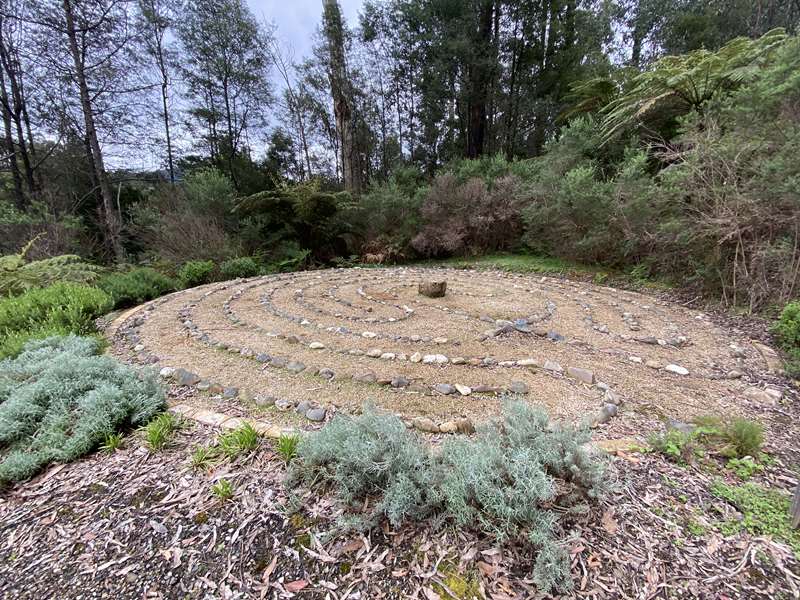Marysville Labyrinth


The Marysville Labyrinth was developed as an initiative of the Anglican Parish of Marysville and Buxton.
Once the new church was completed, thoughts turned towards the space surrounding the church and ways that this could be made available to the wider community. The idea of a space where people could find peace and opportunity for quiet reflection seemed fitting for this location, and the setting, among eucalypts and tree ferns reminds us of the beauty and regenerative power of nature. Once the idea was talked about, there was much community interest from community groups and a community day was held to place the river rocks in place to complete the labyrinth design.
Construction - The Marysville Labyrinth is a Classic 7 Circuit design - probably the oldest in existence, dating back about 4000 years. It is constructed of an unsealed base of crushed rock and Pap Cream toppings with locally sourced river rocks forming the labyrinth design. The whole space is contained by a timbercrete brick edging in keeping with material used in the church building. At the centre of the labyrinth is a large rock to sit and contemplate.
The labyrinth, surrounded by the Marysville State Park on three sides, is beautifully shaded by tall peppermint gums and messmates interspersed with tree ferns. Bench seats are available to sit in preparation to walk the labyrinth, or to just enjoy the peaceful environment. There is also parking and disabled access, though unfortunately, due to size constraints the labyrinth pathway is not wide enough for wheelchair access. People unable to walk the labyrinth may make use of the 'finger labyrinth' on the nearby sign.
A labyrinth is not a maze ... A maze is designed to confuse and frustrate with many dead-ends, but a labyrinth has one continuous convoluted path leading eventually to the centre, providing guidance and focus.
How to use the labyrinth - For Christians, and for people of other religions, there are many ways to experience the presence of God - in a church, in the quiet of a special place at home, working in the garden, connecting with other people. Often we seek a place where we can retreat from the business life and focus our mind on the spiritual for prayer and reflection.
Some people, rather than praying, use meditation and mindfulness practices to make spiritual connections. A labyrinth is a tool, so it can be used however the individual finds it helpful.
It can be seen as a special space to be entered, experienced and left again, stepping out of the labyrinth into our normal daily routine. So -
- Take a few moments to sit and clear your mind
- Think of entering the labyrinth as stepping out of your daily life
- Walk slowly and focus on each step, or clear your mind and be aware of sounds and sights around you
- Pause in the centre with an open mind and heart and be at peace in the present moment
- Start the return journey and take a few slow deep breaths before you leave the labyrinth taking the stillness of the walk back into your daily life.
- Focus your mind on your steps. Allow the rhythm of your movement to clear all thoughts from your mind and be in the present moment.
- Ask a question.
- Say a prayer - one you know by heart, bring one with you, or just talk to God.
- Ponder a problem you have been wrestling with
- Meditate with a saying or bible verse
Today there are labyrinths all over the world and in many different settings. In Australia they are found in schools, churches, hospitals, prisons and public open spaces.
Location
1139 Buxton-Marysville Road, Marysville 3779 View Map









